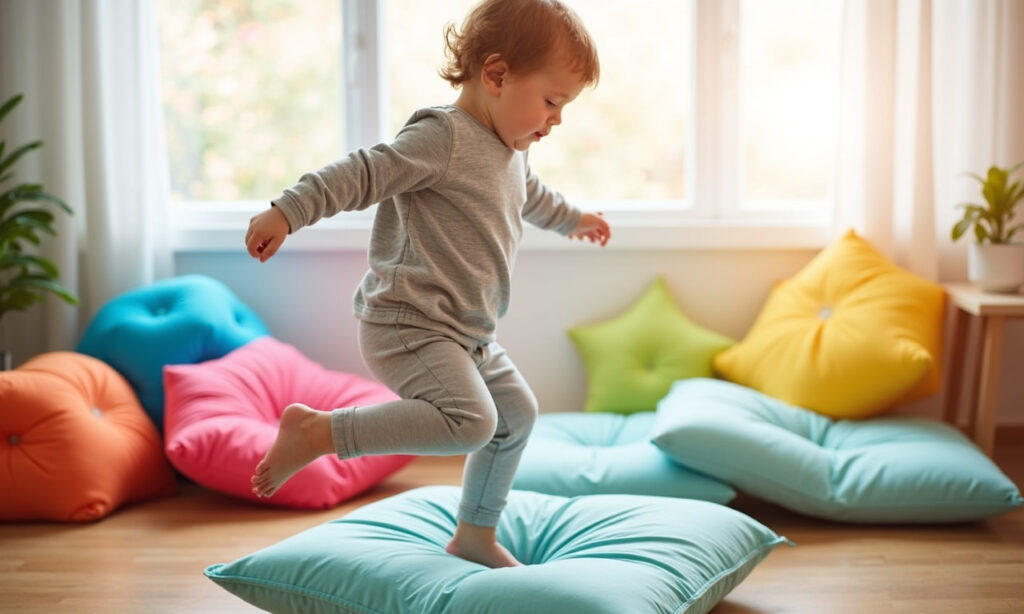As an early childhood educator and a mom to two energetic kids, Emily and Nethan, I know how crucial it is to keep preschoolers active, especially on those days when you’re stuck indoors. Here’s a week’s worth of exciting and easy-to-set-up indoor gross motor activities that will help your little ones burn off that extra energy while having a blast.
Why Indoor Gross Motor Activities are Essential
Gross motor activities are vital for preschoolers as they help develop the large muscle groups needed for running, jumping, throwing, catching, and kicking. These activities not only enhance physical health but also contribute to cognitive development, problem-solving skills, and emotional regulation[1][3][5).
Planning a Week of Indoor Gross Motor Activities
To plan a week of fun and engaging activities, I start by understanding what my kids are interested in at the moment. Here’s how I do it:
- Assess Interests: Use a simple planner or a “My Child This Week” sheet to gauge what each child is into. This helps me tailor activities to their current interests.
- Brainstorm Activities: Jot down 7 activities for the week, ensuring a mix of different types of gross motor skills.
- Include Family Time: Always include a day for family activities to make it more enjoyable and bonding.
A Week of Super Fun Indoor Gross Motor Activities
Here’s a breakdown of a week’s worth of activities that you can try with your preschoolers:
Monday: Walking on Pillows
- Activity: Lay pillows and cushions on the floor in a line. Challenge your child to walk across them without stepping on the floor.
- Supplies: Pillows, cushions
- Why It Works: This activity helps with balance and coordination.
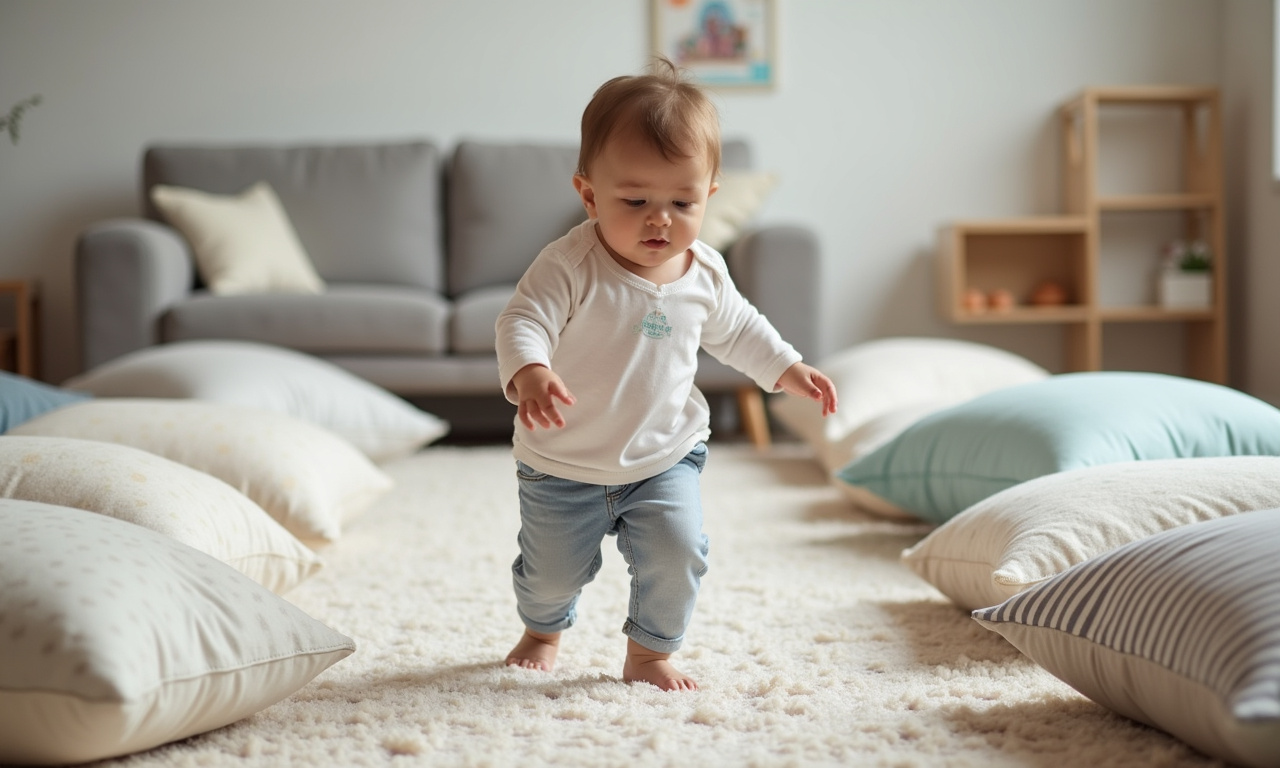
Tuesday: Paper Hands & Feet
- Activity: Trace and cut out your child’s hands and feet on paper. Tape these to the floor and have your child match their hands and feet to the paper outlines. Repeat by repositioning the paper hands and feet.
- Supplies: Paper, pencil, scissors, tape
- Why It Works: Enhances body awareness, stretching, and muscle strengthening.
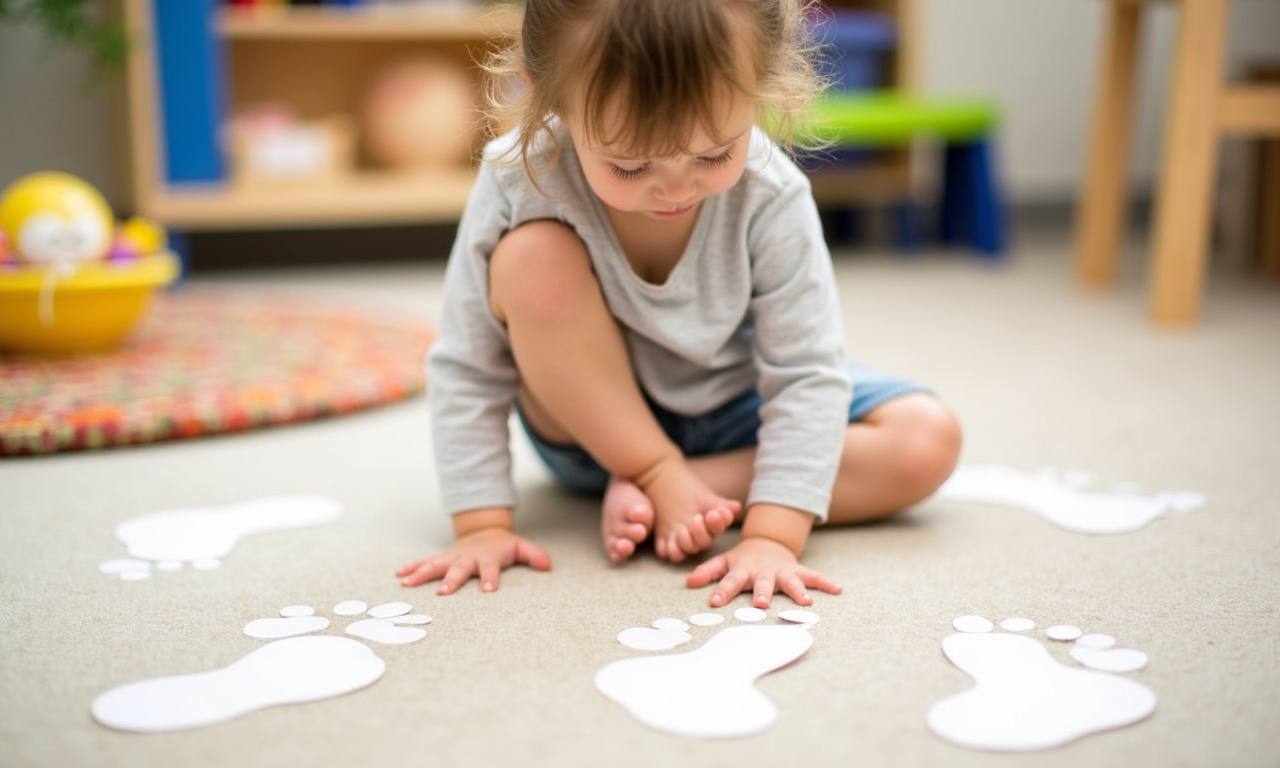
Wednesday: Indoor Snowball Fight
- Activity: Make snowballs using balled-up socks or wadded paper, and have an indoor snowball fight.
- Supplies: Socks or paper
- Why It Works: Encourages physical movement and social interaction.
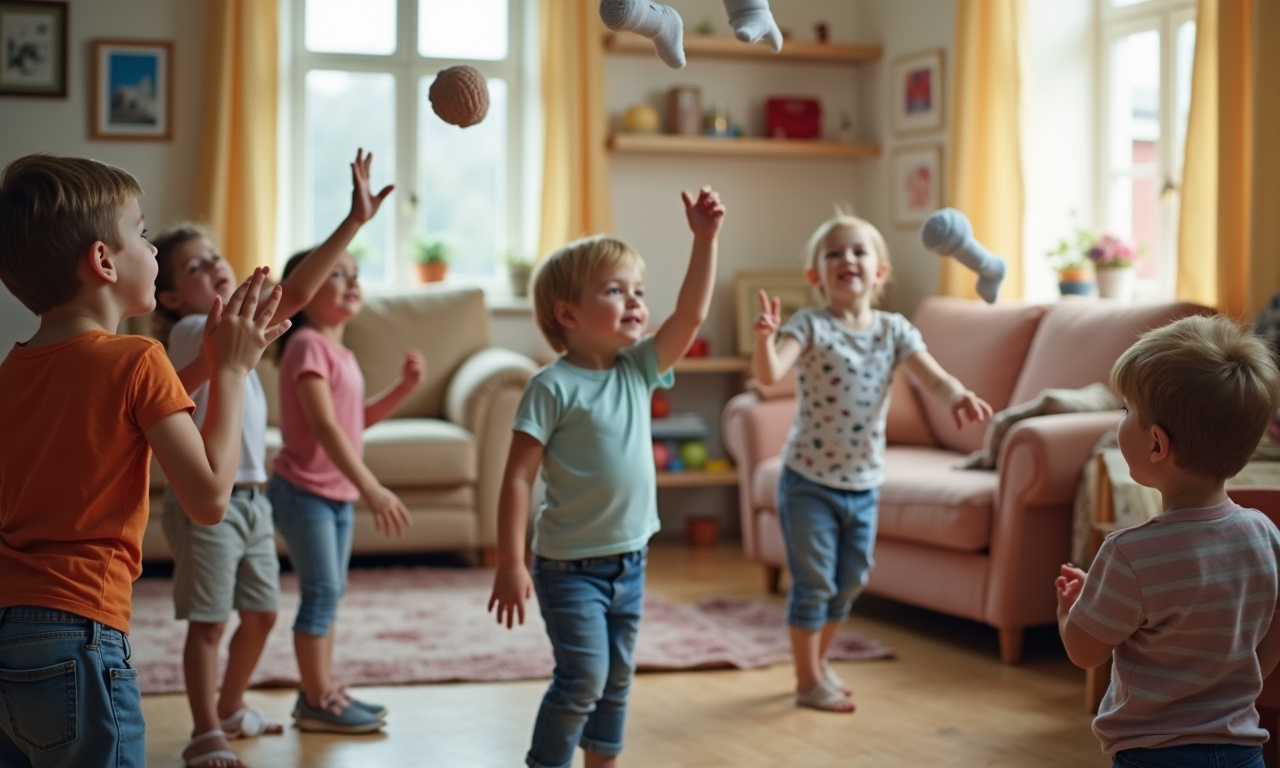
Thursday: A Tape Road
- Activity: Use painter’s tape to create a road with intersections and curves around the house.
- Supplies: Painter’s tape
- Why It Works: Develops balance, coordination, and following directions.
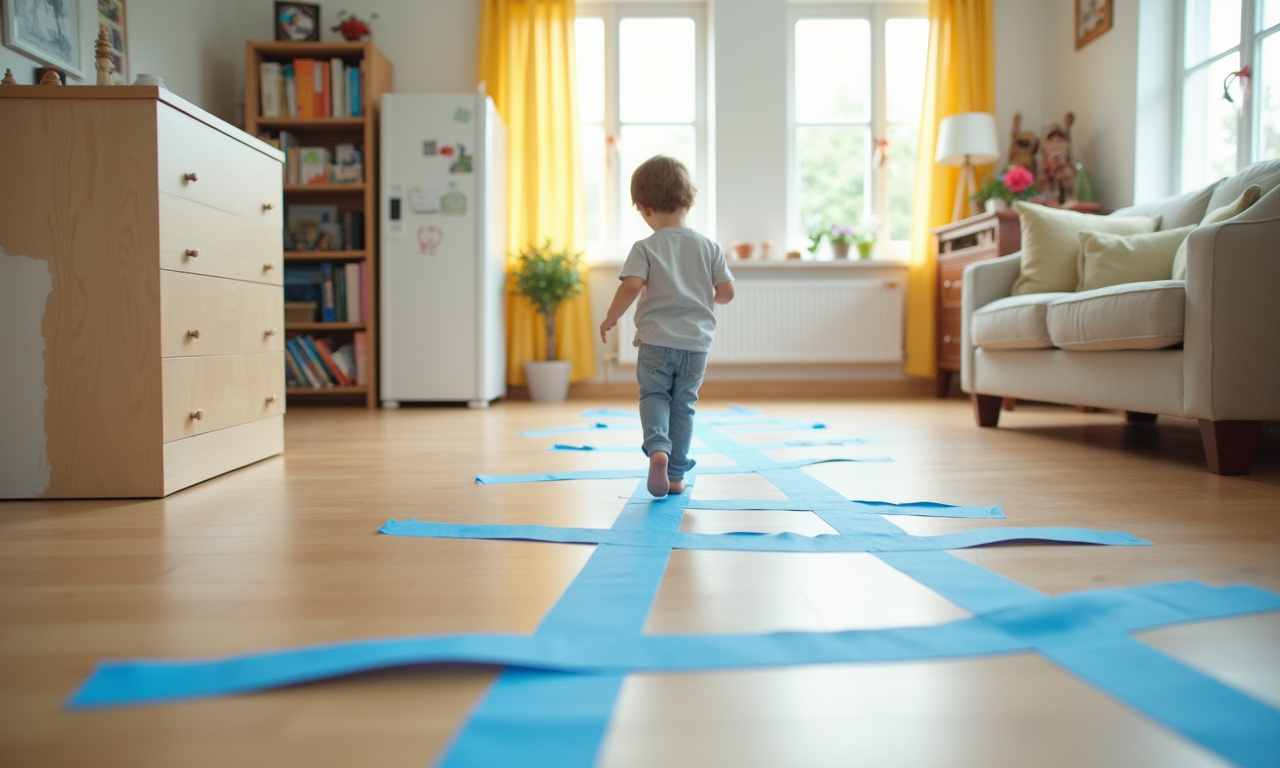
Friday: Simple Frisbee Toss
- Activity: Tape three lines on the floor about a foot apart. Stand back and toss plastic lids like frisbees to land on the tape lines.
- Supplies: Plastic lids, painter’s tape
- Why It Works: Improves hand-eye coordination and throwing skills.
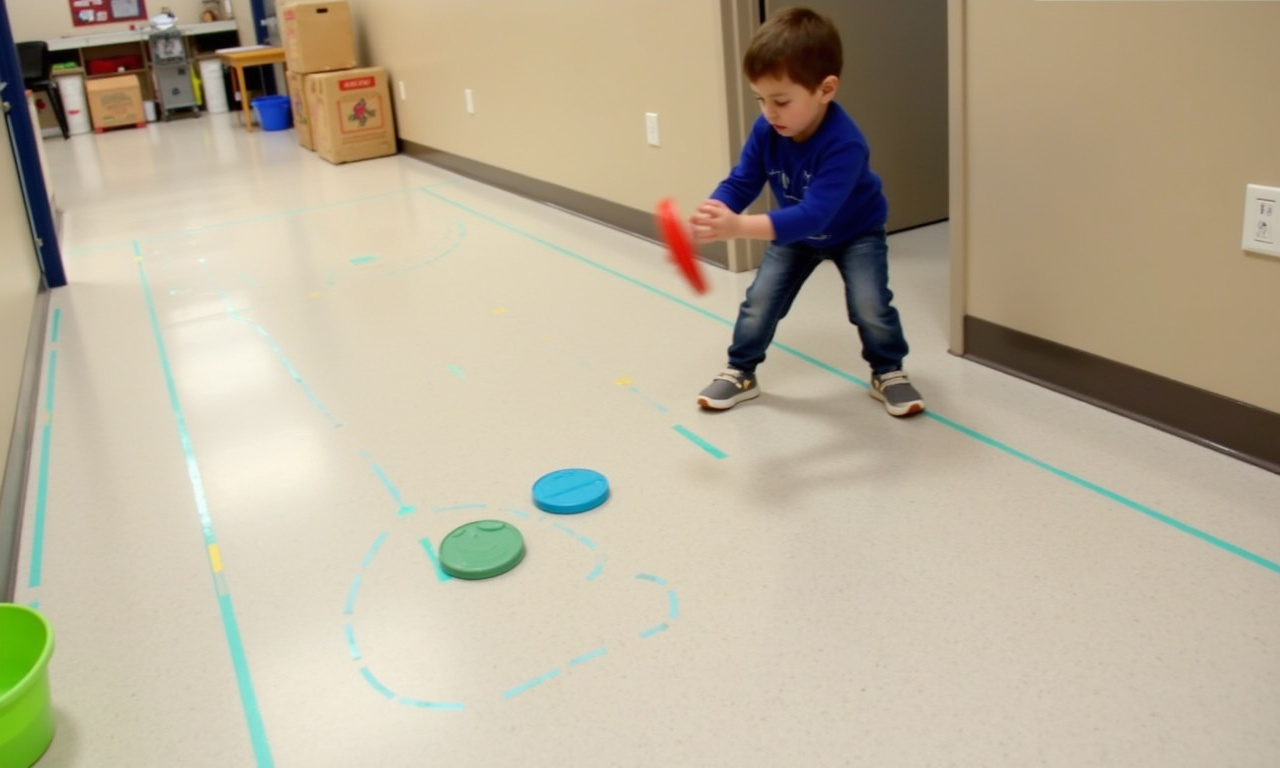
Saturday: Follow the Line Motor Planning
- Activity: Lay out a jump rope or string on the floor in a long line. Move a ball from one end to the other using your hands or feet.
- Supplies: Jump rope or string, ball
- Why It Works: Enhances motor planning and fine motor skills.

Sunday: Don’t Step in the Lava!
- Activity: Spread sheets of paper around the room, within jumping distance of each other. Have your child jump from paper to paper to avoid stepping on the “lava” (the bare floor).
- Supplies: Paper or pillows
- Why It Works: Promotes jumping, balance, and problem-solving.

Additional Ideas to Keep Your Preschoolers Active
Here are some more ideas to keep your preschoolers moving indoors:
Indoor Obstacle Course
- Create an obstacle course using furniture, pillows, boxes, and blankets. You can make it more challenging by adding themes like “The Floor Is Lava.”
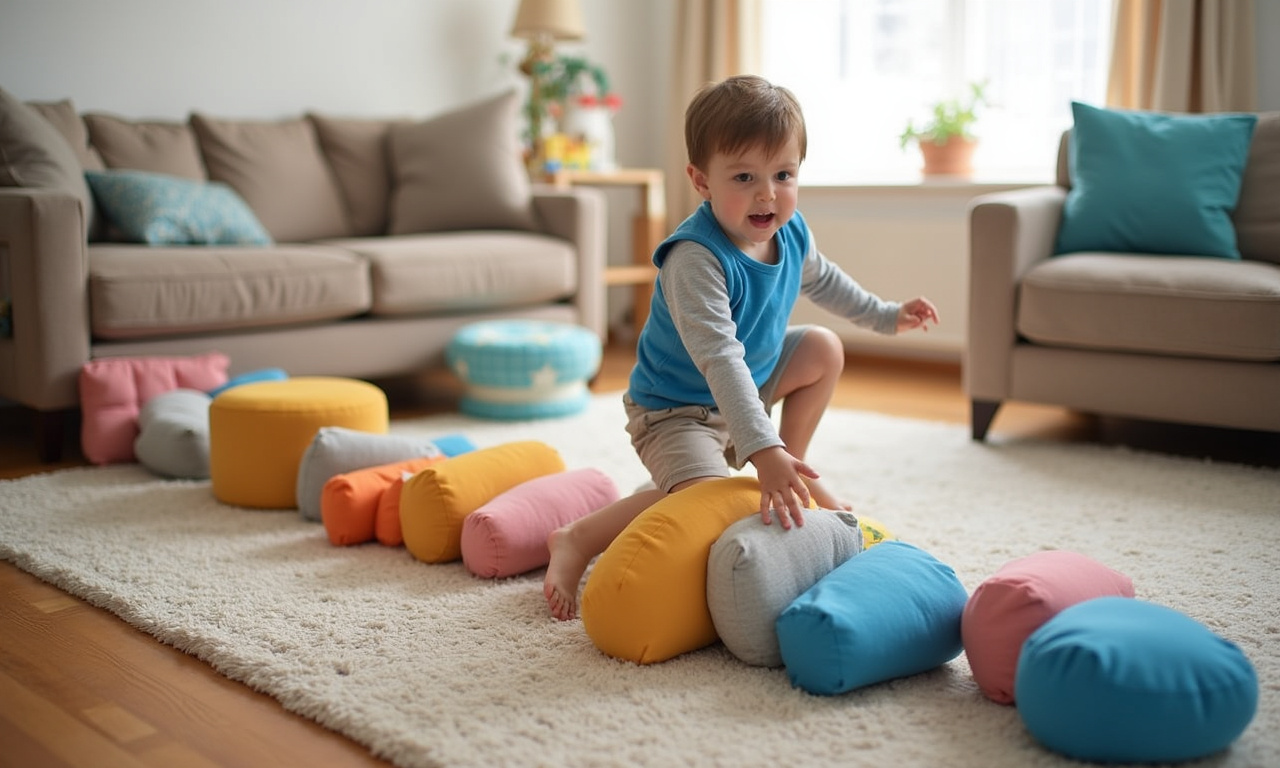
Dancing
- Put on some music and encourage your child to dance freely or follow movement songs like “Head, Shoulders, Knees, and Toes” or “The Wheels on the Bus.”
Balloon Volleyball
- Inflate a balloon and have your child hit it back and forth with their hands or a broom to keep it from touching the ground.
Kid-Friendly Yoga
- Engage your child in simple yoga poses, and don’t worry if they fall over – it’s all part of the fun!
Throwing Paper Planes
- Help your child make and decorate paper planes, then see how far they can throw them.
Encouraging Participation and Safety
- Clear the Space: Ensure the play area is free from physical hazards like fragile items or furniture with sharp edges.
- Participate Together: Join in the fun with your child to make the activities more enjoyable and to provide guidance when needed.
- Positive Reinforcement: Praise your child for their efforts and accomplishments to boost their self-esteem and confidence.
Conclusion
Keeping your preschoolers active indoors is not only about burning energy but also about fostering their overall development. These activities are designed to be fun, engaging, and easy to set up, ensuring that your child stays active and happy even on the most indoors of days.
FAQs
What are gross motor skills?
Gross motor skills involve the use of large muscle groups to perform activities such as running, jumping, walking, and maintaining balance[3].
Why are indoor gross motor activities important?
Indoor gross motor activities help in developing strength, coordination, balance, and problem-solving skills. They also improve cognitive functioning and emotional regulation[1][3][5].
How much physical activity do preschoolers need?
Preschoolers need at least 60 minutes of active play every day to thrive, even during winter months[5].
Can these activities be adapted for children with disabilities?
Yes, many of these activities can be adapted to suit children with disabilities. For example, using larger targets or providing additional support during balance activities.
How can I ensure my child’s safety during these activities?
Clear the play area of any hazards, supervise your child during the activities, and ensure they are wearing comfortable and safe clothing.


